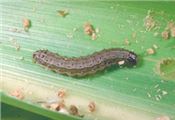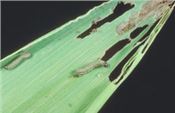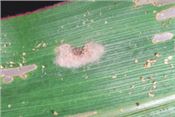|
Watch For Fall Armyworm In Pastures
DR. RIC BESSIN
LEXINGTON, KY.
Fall armyworm is a recurring pest of pastures, and there have been several outbreaks in pastures the past few years. As we move into autumn, risk of fall armyworm moving into Kentucky from southern areas increases. Growers managing pastures should begin watching for early stages of fall armyworm. Pay particular attention to areas where the grass may seem to thin-out or turn brown. Fall armyworm damage may resemble drought stress. Droughty conditions, such as has occurred in August, are favorable for fall armyworm.
Fall armyworm doesn’t survive freezes in winter in Kentucky and must recolonize each year from southern areas in Florida and southern Texas. While there can be 3 or 4 generations in the South, Kentucky typically has only one or two generations. There have been some reports of increasing fall armyworm numbers in states to our south this summer.
There are two strains of fall armyworm, corn strain and rice strain, with important differences in feeding. The corn strain feeds most commonly on corn, sorghum, and cotton. The rice strain prefers rice, alfalfa, grasses in pastures, millet, and vegetables. Unfortunately, these strains are indistinguishable based on appearance.
Scouting
Catching fall armyworm in its early stages greatly reduces damage to pastures and hay. While damage by fall armyworm may appear to happen overnight, feeding by young stages is minimal compared to losses by 5th and 6th instar larvae. Even though time to reach the 5th instar is similar to the time spent as a 5th and 6th instar, these larger larvae consume 10 or more times the amount of food consumed by young stages. As larvae may hide during the hottest part of the day, the best time to scout for fall armyworm in pastures is into late morning or in late afternoon. A sweep net can be used to locate early infestations of fall armyworm. If you find fall armyworm, the next step would be to count the number per square foot. If more than two to three per square foot are found, they should be controlled with an insecticide or the field should be cut. ∆
DR. RIC BESSIN: Extension Entomologist, University of Kentucky

Figure 1. Fall armyworm can be recognized by the dark inverted ‘Y’ on its head and the four larger dark spots
near the end of its abdomen

Figure 3. Young fall armyworm larvae and their damage to grass blades
Photo: Ric Bessin, UK

Figure 2. A fall armyworm egg mass and the ‘window-pane’ damage caused by young larvae
Photo: Ric Bessin, UK
|
|